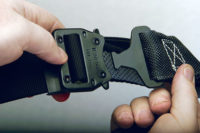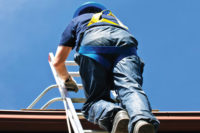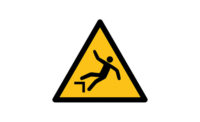Year after year, falls continue to hold the dubious distinction of the most frequent cause of fatalities at construction sites. Simultaneously the number of OSHA citations issued annually for fall arrest violations remains at or near the top of the list. “OSHA’s $100,000 Club of Safety Citations” is a report issued regularly. From September 1, 2011 through February of this year 11 companies were cited for violations involving fall protection. Proposed penalties range from $589,200 to $102,300. Companies cited were from a cross section of industries including steel erection, masonry contractor, construction, general contractor, warehouse, retail, food processor and shipyard/boat repair.
A deputy director of NIOSH said “Falls kill; they are the top cause of construction fatalities accounting for one-third of on-the-job deaths in the industry.”
Why do falls continue to kill?
The question that remains unanswered is, “Why do we continue to see these disappointing and miserable results” in spite of a host of well-intentioned initiatives? Fall Protection manufacturers; contractors/employers and workers all share the responsibility. Reliable equipment in the hands of trained personnel is a big part of the solution. “Reliable equipment” is our responsibility as manufacturers. While training and selecting the right equipment for the task is basically the job of the employer, we can, and should help.
All residential construction companies must comply with 29CFR Part 1926.501 (b)(13). – Check out SR1441:
(13) Residential construction. Each employee engaged in residential construction activities 6 feet (1.8 m) or more above lower levels shall be protected by guardrail systems, safety net system, or personal fall arrest system unless another provision in paragraph (b) of this section provides for an alternative fall protection measure. Exception: When the employer can demonstrate that it is infeasible or creates a greater hazard to use these systems, the employer shall develop and implement a fall protection plan which meets the requirements of paragraph (k) of 1926.502.
Since roofers have been required to use fall protection for a relatively short time, this is new to them and some of them are very unfamiliar with the products and their appropriate applications. Roofers normally tie-off at the peak of the roof and have a fall hazard that will involve a foot level drop over a sharp edge. Not all equipment is approved for this application. However, the instructions for the product they purchase often end up unread on the ground.
“Did you read our instructions?”
Recently I had a large customer who has a huge facility that was built in the 1950s. It required a lot of roof repair and they hired some high quality sub-contractors to do the work for them. A worker was in the situation where he was on a corrugated roof that gave way. He was in a harness hooked to a retractable. However, as he fell through the roof he cut the cable on the retractable, fell through the structure to the floor and was seriously injured. This being a large corporation with their own legal team they went into action against the manufacturer. The manufacturer said, “Did you read our instructions?” The attorneys not being familiar with fall protection said, “why?”
After receiving a copy of the instructions, they were shocked to find out the unit was not designed for foot level drops or sharp edges. The wrong equipment had been selected. There was not much they could do in this situation. Now they realized that if another accident occurred and a fatality resulted they could be drawn into a manslaughter case. They began to search for a retractable that was approved for their application. They learned my product line was approved, but asked me to perform a series of tests to verify it. The test was extreme; they wanted a worst-case scenario. They asked that a 282-pound rigid test weight be dropped five feet over a flamed cut piece of steel. The edge was very jagged and sharp; the five feet was chosen to simulate a six-foot-tall man standing at the edge of a roof where his D-ring would be approximately 60 inches above the deck. I put a wooden pallet on the ground because I didn’t want to crack my cement, and even I didn’t think this was going to work. I used six wire rope retractables and six web retractables for the test.
To my surprise, I didn’t have to use the pallet. The difference was the internal mechanism of the retractable. The units contain a mechanical shock absorber. Instead of hitting the edge of the flame cut steel, the wire and the web are allowed to slide over the edge instead of stopping and cutting like an ax.
Some retractables on the market that lock up quickly offer a shock absorber that can be attached at the tie-off point. Instead of the wire deploying from the retractable, the whole retractable moves allowing the line, of the retractable to slide over the sharp edge. Both systems are effective.
The problem is the workers are often unaware of the after-market part and don’t install it. Reading the instructions would solve this problem. I personally prefer a retractable that is self-contained. Some retractable instructions state that you must set railing or perimeters wire or guard rail around the entire structure to avoid the fall; in that case why even use a retractable.
Conclusion
Not being proactive or lacking concern could draw you into negligence and even “manslaughter” in extreme cases. Make reading instructions of components a top priority.



